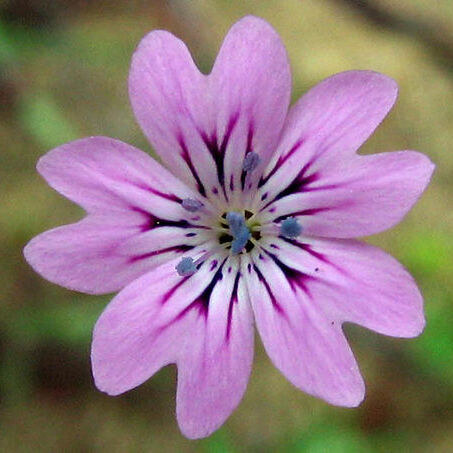Herbs, annual or perennial, glabrous, pubescent or glandular-hairy. Leaves opposite, linear to oblong; stipules absent. Bracts ± scarious or absent. Flowers in paniculate or capitate dichasial cymes, 5-merous, unisexual or bisexual. Epicalyx present. Calyx tubular, 5–15-veined, green with scarious seams between veins, 5-lobed. Petals 5, exceeding calyx, pink, red, purple, white or pale yellow; coronal scales absent. Stamens 10. Ovary 1-celled above, 4-celled below; styles 2. Capsule narrowly ovoid, opening by 4 teeth; carpophore short. Seeds several, ovate-scutate, dorsiventrally compressed, bluntly tuberculate or rugulose, with a hilum on the face.
Herbs annual (or perennial). Stems erect or ascending. Leaves linear or linear-subulate; stipules absent. Inflorescence a cymose panicle, (rarely capitate); bracts subtending calyx in 1--4 pairs or rarely absent. Flowers small. Calyx campanulate, 5(or 15)-veined, scarious between veins, 5-toothed. Petals 5, white (or reddish), (with or) without claw; limb entire (or emarginate). Stamens 10. Ovary 1-loculed; ovules numerous; styles 2. Capsule oblong or ovoid, dehiscing by 4 teeth or valves. Seeds numerous, dorsiventrally compressed, ridged-winged, tuberculate or smooth; embryo straight.
Fls individually terminating the branches, or often clustered into head-like, conspicuously involucrate cymes terminating the branches; cal often (including our spp.) subtended by 1–3 pairs of bracts; cal-tube 5-nerved, generally with membranous, veinless commissures beneath the sinuses (unlike Dianthus); pet without auricles or appendages; stamens 10; styles 2; capsule dehiscent by 4 teeth; seeds as in Dianthus. 25, mainly Mediterranean.

